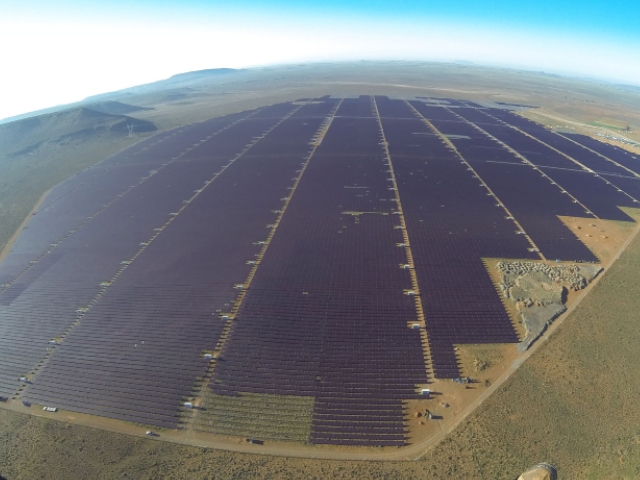
-
Bigger Is Better – How SA’s Biggest Solar Plant Compares To The World
17 Jan 2023 by Heinrich in South Africa, Tech/Sci, World
[imagesource: Solar Capitol]
When it comes to renewable energy, South Africa is often seen as an ideal candidate for these ‘green’ projects.
Whether wind or solar, we have both the conditions and available surface area to incorporate a mixture of renewables into our existing energy supply.
IPPs (Independent Power Producers) are increasingly looked to for answers to our electricity woes, but just how much ‘renewable’ energy do we currently produce? And how do we compare to the rest of the world?
South Africa’s largest solar plant is located in the Northern Cape and is known as the Solar Capital De Aar Project.
This mega project took 28 months to complete and cost an estimated R4,8 billion to complete. With half a million PV panels that cover an area of roughly 473 hectares, it is a massive engineering feat that produces approximately 175MW, enough to supply electricity to 75 000 homes a year.
That equates to about 158 homes for every hectare of space. Very impressive.

Image: Solar Capitol
My Broadband notes that as of January 11 this year, Eskom’s renewable statistics page showed it had around 2 787MW of maximum solar generating power connected to the grid.
Although the output from the De Aar solar plant is substantially more than most of the 50-100MW plants we have in South Africa, we still have quite a ways to go if we want to compete with the biggest plants in the world.
For this honour, we have to look at India, where we will find Bhadla Solar Park.
Bhadla Solar Park was constructed in four phases and the project was completed in March 2019, covering an area of nearly 5 700 hectares with 10 million solar panels. Once it was brought up to capacity, the solar farm produced a whopping 2 245MW, nearly 13 times more than our homegrown contender in De Aar.
Running at full capacity, the solar plant produces more electricity than Koeberg Nuclear Power Station. It’s so big that it can be seen from space.
Around the world, there are other massive solar power plants, such as the Huanghe Hydropower Hainan Solar Park in China which produces 2 200MW, as well as the Pavagada Solar Park – also in India – with a capacity of 2 050MW.
Despite our country’s energy crisis, Eskom has only added about 76MW of additional solar energy this year:
Without expensive battery storage, solar power plants also can’t supply electricity during evening peak demand periods, as these occur when the sun is down.
Energy experts agree though that solar and wind power alone is not enough to make up for Eskom’s shortcomings, and even though we would love a ‘green’ energy future, the need for gas and coal-based electricity generation is still a reality we have to face in the foreseeable future.
Perhaps with Eskom being acknowledged as a sinking ship, innovation in renewables will make our younger generation focus more on engineering and sciences than political sciences and law degrees.
We need more of the first and less of the latter. Just saying.
[source:mybroadband]
Latest News
-
Game, Seth, Match – Goodbye 2024
Hey Guys - thought I’d just give a quick reach-around and say a big thank you to our rea...
-
Breakfast Of Champions: Hollywoodbets Kenilworth Racecourse Breakfast Gallops Is Back!
[imagesource:CapeRacing] For a unique breakfast experience combining the thrill of hors...
-
Need NYE Plans? Cafe Caprice’s Night Of Enchantment Masquerade Party Could Do The Trick
[imagesource:howler] If you're still stumped about what to do to ring in the new year -...
-
Buckingham Palace Steps In After Staff Christmas Party Spirals Out Of Control
[imagesource:maxandeli/facebook] It's not just in corporate that staff parties get a li...
-
Designer Babies Are Running Into Trouble As Teens, Grappling With Being ‘Experiments’
[imagesource:here] Imagine being born with the weight of your parents’ version of per...
-






























